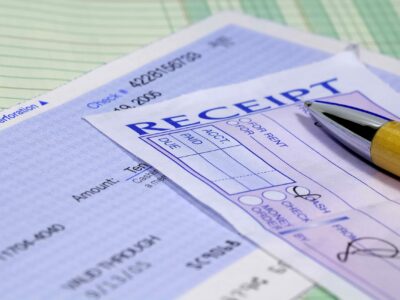
Handling prepaid expenses right is key to keeping your books in order. Let’s break down the steps you need to follow, from the initial entry to the adjustments. Before we get too carried away with adjustments, let’s revisit the initial journal entry when you first pay for the insurance. The expense would show up on the income statement while the decrease in prepaid rent of $10,000 would reduce the assets on the balance sheet by $10,000.
Accountancy
Common examples include interest payments on loans, taxes (everyone’s favorite), and warranties on products or services you’ve received. Don’t forget expenses like wages, employee commissions, and bonuses—your team worked hard, and their pay needs to be accounted for, even if the cash hasn’t left your account yet. This guide breaks down accruals, deferrals, and non-cash https://bobbycontracting.ca/construction-receipt-everything-to-know-free/ expenses with clear examples to make year-end a breeze.

Prepaid Expenses
- He is the sole author of all the materials on AccountingCoach.com.
- This means the company should record the insurance expense at the period end adjusting entry when a portion of prepaid insurance has expired.
- Getting prepayments right in accounting is key for spot-on financial reports.
- Because prepayments they are not yet incurred, they should not be classified as expenses.
- The Installment of insurance premium amounting to ₹5,000 was paid in advance.
To deal with the mismatches between cash and transactions, deferred or accrued accounts are created to record the cash payments or actual transactions. For more on how prepaid expenses affect financial statements, see our article on what is journal in accounting. Prepaid rent is rent you pay before you actually use the space. When you make this payment, it shows up as an asset on your balance sheet, signaling future benefits.
- These payments are assets because they promise future benefits.
- Prepaid expenses represent expenditures that have not yet been recorded by a company as an expense, but have been paid for in advance.
- After making the entry, the balance of the unused Service Supplies is now at $600 ($1,500 debit and $900 credit).
- This means debiting the rent expense account and crediting the prepaid rent account.
- You need to allocate some of the amount paid in advance to the Insurance Expense account.
- Prepaid insurance is usually categorized as a current asset because the coverage typically expires within one year or the company’s operating cycle.
How to record a prepaid expense: Examples
- By following these steps, you can be confident that your balance sheet and income statement properly reflect your business operations.
- Promptly correcting these issues maintains the integrity of financial records.
- The allowance for doubtful accounts lets you anticipate and account for these potential losses.
- As your insurance coverage period goes on, you expense the prepaid insurance.
- Create a prepaid expenses journal entry in your books at the time of purchase, before using the good or service.
- The depreciation expense on office equipment for the month of March is Rs. 50.
So, buckle up, because we’re about to dive into the nitty-gritty of prepaid insurance journal entries with some down-to-earth examples. Prepaid insurance is recorded on the balance sheet as a short term (current) asset if the service period is less than one year. If spanning longer than a year of coverage, both a short term and long term (non-current) asset will be recorded. As mentioned above, this occurs when coverage is purchased for an extended period of time and is paid at the beginning of the coverage period for the whole term. As we will see in our example below, in order to recognize this prepayment of insurance, we must make a journal entry to debit prepaid insurance and credit cash for the full amount. Subsequent entries are made to record expense by debiting insurance expense and crediting prepaid insurance to record the monthly expense and amortization for the corresponding period.
Record prepaid insurance with journal entry
- On the flip side, accrued expenses are costs you’ve incurred but haven’t been billed for yet.
- Prepaid Insurance journal entry is passed to record the amount paid as advance for the insurance.
- These prepaid insurance journal entries keep your books aligned with accrual accounting principles, recognizing expenses in the period they occur, not when the cash leaves your account.
- We’ll keep it real, toss in a dash of humor, and by the end, you’ll understand why these adjustments are essential for your financial statements—not just some accounting mumbo jumbo.
- If spanning longer than a year of coverage, both a short term and long term (non-current) asset will be recorded.
The one-year period for the insurance rarely coincides with the company’s accounting year. Therefore, the insurance payments will likely involve more than one annual financial statement and many interim financial statements. The debit entry to insurance expense will result in adding the expenses whereas credit to the prepaid expense account will result in decreasing the current asset.

On the other hand, liabilities, equity, and revenue are increased by credits and decreased by debits. This shifts the expired amount from an asset to an expense, aligning with the adjusting entry for prepaid insurance matching principle. If your company reports quarterly, by March 31, 2023, a quarter of the insurance has expired. Adjusting entries might sound like advanced wizardry, but it’s straightforward once you get the hang of it.

Examples include utility bills, salaries and taxes, which are usually charged in a later period after they have been incurred. Getting prepayments right means your financial reports will be spot on. This steady recognition of expense aligns with the matching principle in accounting ensuring revenues and expenses are recorded in the same period.
Adjusting Entry for Prepaid Insurance: Step-by-Step

At the end of each month, an adjusting entry of $400 will be recorded to debit Insurance Expense and credit Prepaid Insurance. Prepaid insurance might not be the flashiest part of accounting, but it’s one of those quiet essentials that keeps your books accurate and trustworthy. By understanding how it works and avoiding common mistakes like misclassification or missed adjustments, you keep your financial reports clear, compliant, and credible. Accurate prepaid insurance accounting helps maintain consistency, reliability, and transparency — three essentials for any business that wants to grow sustainably.
Prepayment Journal Entry Examples
The prepaid rent account goes down each month as the expense account goes up. The balance in the current asset account Prepaid Expenses should be adjusted prior to a company issuing its financial statements. A payment made for insurance coverage before the period it actually applies to. Since it provides future economic benefits, it’s recorded as an HOA Accounting asset rather than an immediate expense. By making this journal entry, the company will be able to record the insurance expense which has been incurred already and the part of prepaid insurance which has now already expired.
